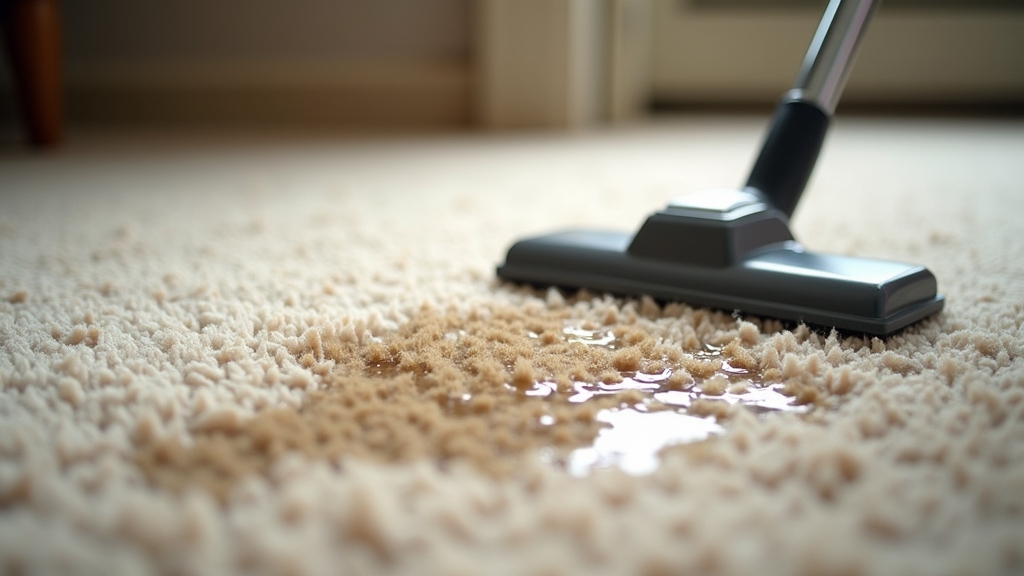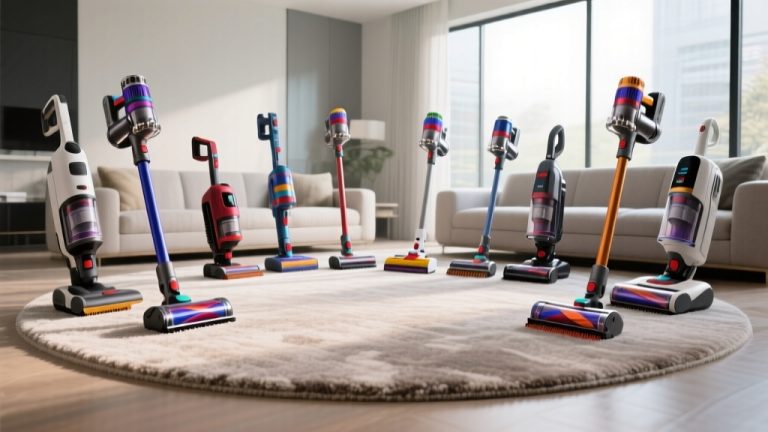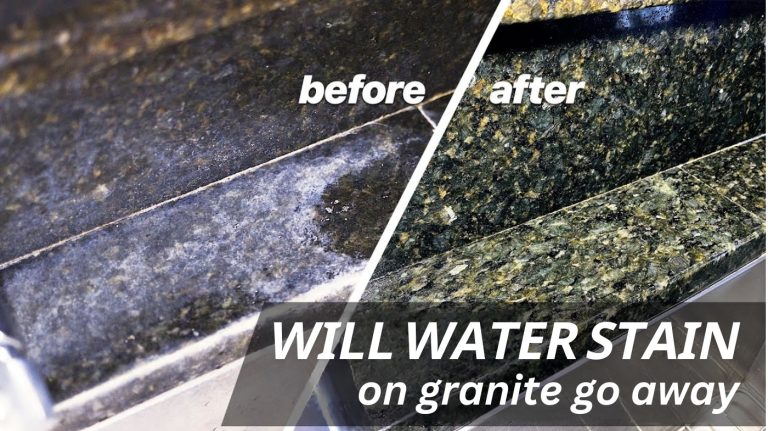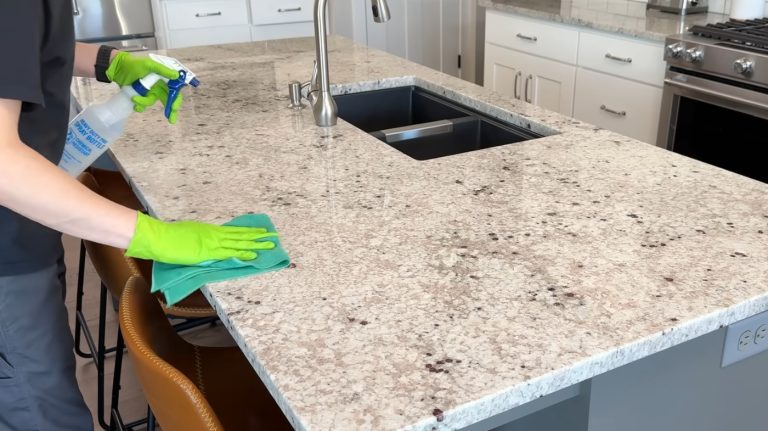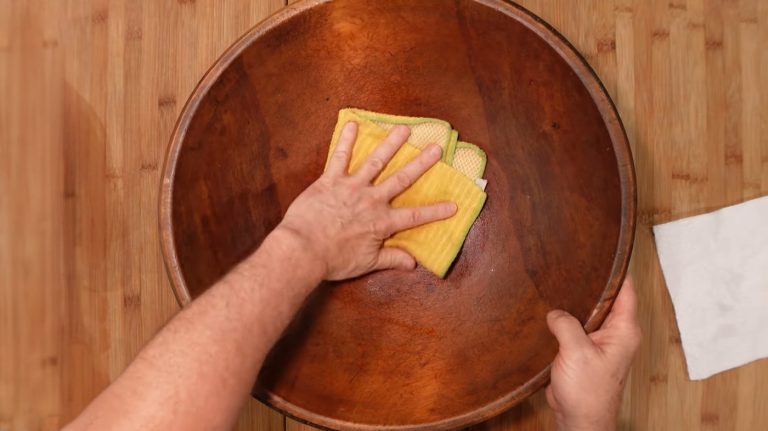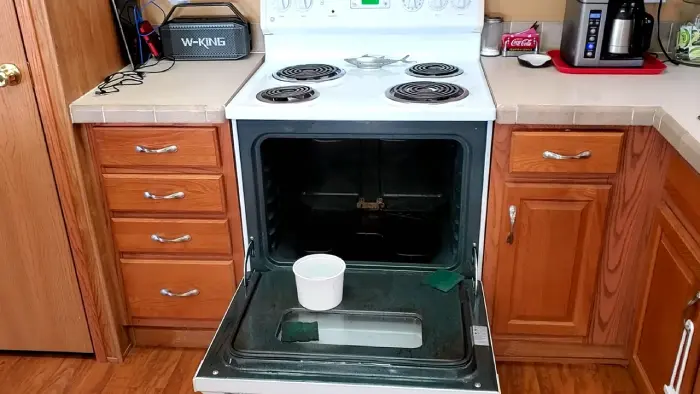Can Carpet Cleaning Cause Mold: Control Carpet Moisture
Yes, carpet cleaning can cause mold if excess water saturates fibers and padding without drying properly within 24-48 hours. High indoor humidity, poor ventilation, and improper extraction trap moisture, creating ideal conditions for mold to grow.
Carpets with organic debris or soaked from leaks are most vulnerable. You’ll need to manage moisture carefully and guarantee rapid drying to prevent mold development.
Understanding these risks helps you maintain a clean, mold-free carpet environment.
Key Takeaways
- Excessive water use and improper drying during carpet cleaning can saturate fibers and padding, creating ideal conditions for mold growth.
- Carpets left damp for more than 24-48 hours after cleaning significantly increase the risk of mold colonization.
- Poor ventilation and high indoor humidity during and after cleaning slow drying, promoting moisture retention and mold proliferation.
- Using heavy shampooing or DIY cleaning methods often traps moisture, increasing mold susceptibility in carpets.
- Maintaining low humidity, proper ventilation, and quick drying after cleaning are essential to prevent mold development.
How Excess Water During Carpet Cleaning Promotes Mold Growth?
When you use excess water during carpet cleaning, you create ideal conditions for mold growth by saturating carpet fibers and padding. These materials retain moisture far longer than hard flooring.
This prolonged dampness provides a moisture reservoir in the carpet backing and padding, enabling mold spores to colonize rapidly. If your carpet doesn’t dry within 24 to 48 hours, the risk of mold growth increases considerably.
Improper cleaning methods, especially DIY or heavy shampooing without thorough water extraction, exacerbate this issue. Residual moisture trapped deep within the carpet structure forms microenvironments that are dark, warm, and humid, perfect for mold proliferation.
Efficient drying techniques and industrial-grade extraction tools are essential. Otherwise, moisture lingers, promoting mold development and potentially damaging carpet padding beyond repair.
Using cleaning technologies with gentle heating and dual-beating systems can reduce moisture levels and inhibit mold growth effectively.
Environmental Factors That Encourage Mold After Cleaning
Although thorough cleaning removes dirt and debris, environmental factors play a pivotal role in determining whether mold will develop afterward.
Excess moisture, especially in high-humidity environments, creates ideal conditions for mold growth on carpets.
High humidity and excess moisture provide perfect conditions for mold to thrive on carpets.
Maintaining indoor relative humidity between 20-40% in winter and below 60% during warmer months is essential to inhibit fungal proliferation.
Proper ventilation and enhanced air circulation accelerate carpet drying, reducing moisture retention.
Warm temperatures can facilitate mold but are less controllable than humidity and ventilation.
Additionally, carpet fiber type influences susceptibility; natural fibers absorb more moisture and provide nutrients for fungi, unlike synthetic fibers.
After cleaning, prompt drying within 24 hours is pivotal to prevent microbial colonization.
Using micro-filling technology in floor restorers illustrates how advanced formulations can protect surfaces by reducing moisture penetration, a concept relevant to mold prevention strategies.
Controlling these environmental parameters effectively minimizes the risk of mold establishing on cleaned carpets.
Common Risk Factors That Increase Mold Development in Carpets
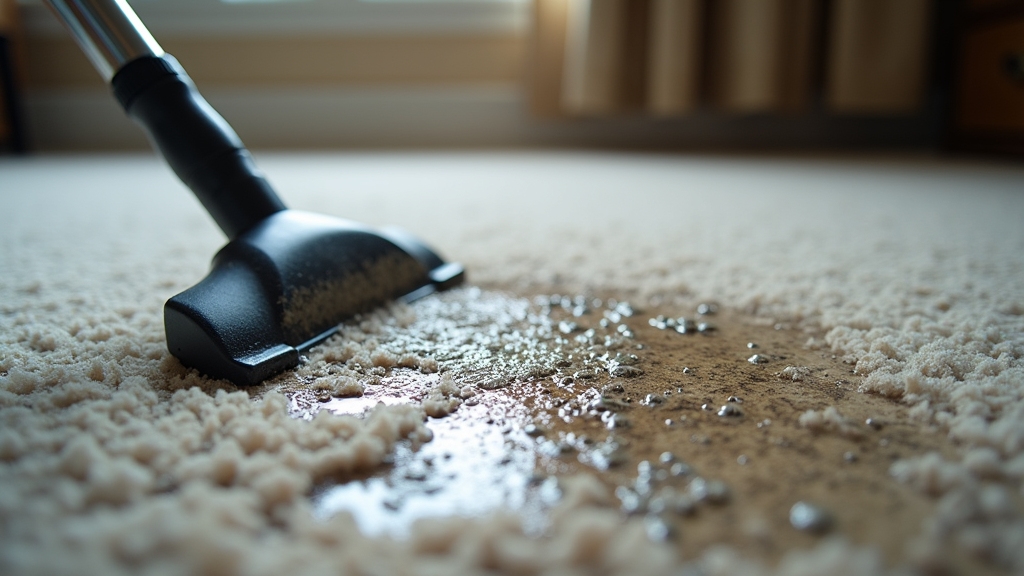
To keep mold at bay in your carpets, it’s super important to manage excess moisture. When carpets stay damp, it creates the perfect breeding ground for mold spores. And you know what? Poor ventilation makes things worse.
If there’s not enough air circulation, that dampness lingers longer, which just ramps up the risk of mold growth. Using tools with ergonomic handles can help ensure thorough drying and cleaning to prevent lingering moisture.
Continuous moisture exposure weakens carpet fibers and can lead to structural issues if not addressed promptly.
Excess Moisture Retention
Because carpets naturally retain moisture due to their fibrous structure, they create a microenvironment that favors mold growth by maintaining higher relative humidity levels at the carpet base than in the surrounding air.
This localized humidity often remains near 70% RH, even when room air fluctuates between 50–75% RH, promoting microbial colonization.
Excess moisture from leaks, spills, or subfloor dampness saturates carpet fibers and padding, accelerating mold development. Using a wet/dry vacuum to extract excess water can significantly reduce drying time and help prevent mold growth.
Mold spores can begin growing on damp carpets within 24 to 48 hours, making timely intervention critical.
Organic debris trapped in fibers further increases moisture retention, providing nutrients for mold. Prolonged dampness, especially in older or heavily soiled carpets, intensifies this risk.
Synthetic fibers resist mold better than natural ones but aren’t immune.
Poor Ventilation Effects
When indoor ventilation falls short, moisture accumulates in carpeted areas, creating ideal conditions for mold growth.
Poor airflow traps humid air, preventing moisture from evaporating and causing condensation on carpet fibers and padding. The humid continental climate of Mason City, with its hot, humid summers and cold winters, further contributes to seasonal moisture buildup in carpets.
Using natural carpet cleaners that do not leave residues can also help reduce moisture retention in carpets.
This moisture retention provides a substrate for mold spores, such as Aspergillus and Penicillium, to germinate. Rooms with limited ventilation, like basements or tightly sealed spaces, are especially vulnerable.
HVAC systems with ineffective ducting or diffuser placement can create cold spots, increasing condensation risk. Lack of cross-ventilation causes localized humidity spikes, delaying drying of carpets after cleaning or spills.
Seasonal climate shifts and sealed environments during heating seasons exacerbate moisture buildup by reducing fresh air exchange.
To minimize mold risk, ensure adequate ventilation that promotes air circulation and humidity control within carpeted areas.
Prolonged Dampness Risks
Insufficient ventilation often leads to trapped moisture. Prolonged dampness within carpets considerably heightens the risk of mold development, as water-based solvents used in cleaning can help reduce residual moisture.
Excessive moisture from improper cleaning, such as using too much water or failing to extract it thoroughly, saturates carpet fibers and pads, creating an ideal environment for mold.
Hot Water Extraction injects hot water and vacuum pulls it out, but can leave fibers overly wet. High water pressure during cleaning can exacerbate this by over-saturating the carpet base.
If carpets remain wet for over 24 hours, mold spores, which are always present, can quickly colonize the damp substrate. Humid conditions further slow drying times, increasing mold susceptibility.
To prevent this, guarantee rapid drying using appropriate extraction methods and control ambient humidity. Regular inspections for moisture accumulation and professional cleaning with low water usage reduce prolonged dampness risks and help maintain mold-free carpets.
Best Practices to Prevent Mold Following Carpet Cleaning
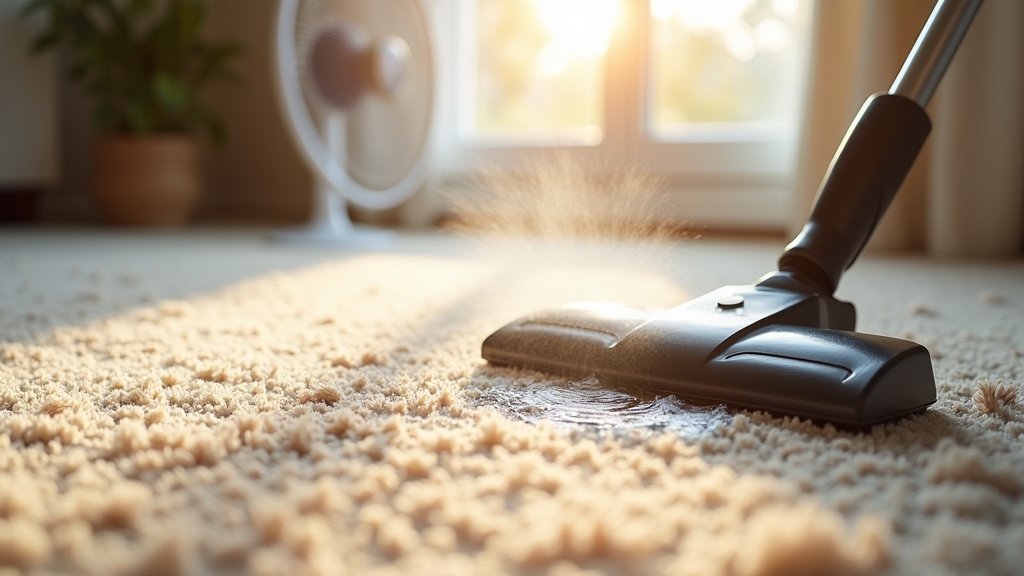
When it comes to carpet cleaning, it’s really important to keep an eye on how much water you’re using. Too much moisture can create the perfect environment for mold to grow, and we definitely want to avoid that.
Using products with enzyme-producing bacteria can also help break down organic material and reduce mold risk after cleaning. To help your carpets dry quickly and thoroughly, consider using some efficient drying techniques.
Blowers and dehumidifiers can be game-changers in this regard. Maintaining low humidity levels with air conditioners or dehumidifiers is crucial to prevent mold growth after cleaning.
Controlled Water Usage
How can you effectively minimize mold growth risks after carpet cleaning? Start by controlling water usage to avoid excess moisture, which accelerates mold development.
Use low-moisture or dry cleaning methods when possible, especially on carpets prone to water damage. Apply mild detergents to reduce residue and moisture retention.
Tailor your approach to the carpet type, recognizing that synthetic fibers dry faster than natural ones. Promptly remove standing water using wet vacuums to limit prolonged dampness.
Maintain low indoor humidity during and after cleaning to discourage mold spores. Regularly monitor humidity to ensure excellent conditions.
If uncertain, seek professional help to manage water application precisely. These controlled water usage practices considerably lower mold risks by minimizing moisture exposure and creating an unfavorable environment for mold growth after carpet cleaning.
Additionally, ensure proper ventilation post-cleaning to help carpets dry quickly and prevent moisture buildup, similar to recommended ventilation techniques for steam cleaning painted walls.
Efficient Drying Techniques
Although thorough cleaning removes dirt and contaminants, efficient drying techniques are essential to prevent mold growth after carpet cleaning.
Use industrial air movers and dehumidifiers to accelerate moisture removal from both carpets and surrounding air. Commercial-grade air movers and dehumidifiers are especially effective at removing moisture trapped beneath the carpet and padding, as maintaining low humidity is critical to inhibit mold proliferation.
Enhance airflow by running fans and opening windows, while applying heaters to maintain ideal drying temperatures.
Regularly monitor moisture levels with moisture meters to ensure carpets and padding are completely dry.
Remove excess water using wet vacuums and lift carpets to expose and dry underlying padding. Avoid placing furniture on damp carpets to prevent trapped moisture.
Maintain low humidity with dehumidifiers, and consider antimicrobial treatments to inhibit mold spores.
Acting promptly, ideally within 24 to 48 hours, reduces mold risk and protects indoor air quality effectively.
Recognizing Early Signs of Mold in Carpets
When mold begins developing in carpets, early signs often manifest as subtle discoloration or small patches that might look like minor stains or brownish specks.
You should watch for these specific indicators to catch mold growth promptly:
- Visible patches in black, green, white, yellow, or brown shades that darken or lighten carpet fibers.
- A persistent musty or earthy odor caused by microbial volatile organic compounds (mVOCs), even if mold isn’t visible.
- Dampness or sagging in carpets signaling trapped moisture, which promotes mold proliferation beneath the surface. Using natural and eco-friendly odor eliminators can help manage odors associated with moisture and mildew.
These signs are often accompanied by musty or moldy odor that indicates active mold growth.
Recognizing these signs early enables timely intervention before mold penetrates deeper into padding and flooring. This reduces health risks and structural damage.
Regular inspection and moisture control are essential to prevent mold colonization in carpeted areas.
Effective Methods for Mold Remediation in Carpets
Since mold can deeply penetrate carpet fibers and underlying padding, effective remediation requires targeted techniques that address both visible and hidden contamination.
You must start with a thorough assessment using advanced tools to identify mold extent, followed by containment to prevent spore spread. This initial inspection is crucial for accurate mold identification and tailoring the remediation strategy accordingly.
Deep cleaning or replacement eliminates mold, while industrial drying controls moisture to inhibit recurrence. Use HEPA filtration during treatment to improve air quality.
| Step | Method | Purpose |
|---|---|---|
| Assessment | Advanced inspection | Identify mold presence and scope |
| Containment | Physical barriers | Prevent spore dissemination |
| Cleaning | Specialized solutions | Eradicate mold deep in fibers |
| Drying & Filtering | Dehumidifiers & HEPA | Remove moisture and spores |
Challenges in Managing Mold Risks During Carpet Cleaning
Managing mold risks during carpet cleaning demands careful control of moisture levels introduced by cleaning machines. Residual dampness creates ideal conditions for mold growth beneath the carpet and padding.
You must guarantee rapid water extraction and efficient drying to prevent mold colonization. Several challenges complicate this:
- Environmental factors like high humidity, low ventilation, and carpet construction slow drying times, increasing moisture retention.
- Carpet padding traps water longer, fostering mold growth under carpets and into subfloor structures if drying is inadequate.
- Subsurface moisture sources such as leaks or foundation dampness can reintroduce water, negating cleaning efforts.
Addressing these challenges requires precise moisture management, effective drying technology, and environmental control to reduce mold proliferation risk during and after cleaning.
Frequently Asked Questions
Can Mold From Carpets Affect Indoor Air Quality and Health?
Yes, mold from carpets can considerably degrade indoor air quality and harm your health.
When carpets stay damp or poorly ventilated, mold spores release into the air, triggering respiratory issues like coughing, nasal irritation, and asthma attacks.
If you have allergies or asthma, you’re especially vulnerable. Mold also worsens air quality by accumulating allergens and dust. To protect yourself, control moisture, ensure proper ventilation, and promptly remove moldy carpets.
Are Certain Carpet Materials More Resistant to Mold Growth?
You might be surprised to learn that yes, some carpet materials resist mold better than others. Synthetic fibers like nylon, polyester, and olefin naturally repel moisture, reducing mold growth risk.
In contrast, natural fibers such as wool or cotton absorb moisture, creating an ideal environment for mold.
How Often Should Professional Carpet Cleaning Be Done to Prevent Mold?
You should schedule professional carpet cleaning every 12-18 months for general mold prevention.
If you have pets, children, or allergy sufferers, increase frequency to every 3-6 months, especially in high-traffic areas.
For commercial spaces, clean more often: medical facilities every 1-3 months, hotels and schools every 3-6 months.
Adjust based on carpet type, moisture levels, and humidity to effectively reduce mold risks and maintain healthy indoor air quality.
Can DIY Carpet Cleaning Kits Contribute to Mold Issues?
Think of DIY carpet cleaning kits as using a leaky bucket to bail water. You’ll never remove all the moisture. Yes, these kits often don’t extract water thoroughly, leaving damp fibers and padding that create a breeding ground for mold.
Overwetting, improper drying, and unsuitable chemicals can worsen the problem, promoting microbial growth and damaging your carpet.
To prevent mold, you need professional equipment that guarantees rapid, complete moisture removal and safe chemical use.
Moisture Control Made Easy – Protect Your Carpet From Hidden Hazards
When you clean your carpet, excess water can become a breeding ground for mold, turning a simple task into a hidden hazard. By controlling moisture, understanding environmental risks, and acting swiftly at the first sign of mold, you can keep your carpet safe and healthy.
Think of mold like an unwelcome shadow; if you don’t manage moisture carefully, it’ll quietly creep in. Follow best practices to prevent and effectively remediate mold before it takes hold.

